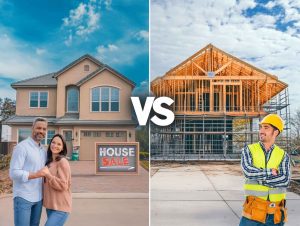Real estate investment is a cornerstone of wealth creation and financial stability, offering various strategies to investors. Among these strategies, flipping properties for quick profits and holding properties for long-term appreciation stand out as popular choices. This report aims to provide insights into the differences between these two approaches and assist investors in selecting the strategy that best fits their goals.
Flipping Properties
Flipping properties involves purchasing distressed or undervalued properties, renovating them, and selling them quickly for a profit. This strategy appeals to investors seeking short-term gains and are willing to take on higher levels of risk and hands-on involvement.
Key Characteristics of Flipping Properties
- Quick Returns: Flipping properties offers the potential for rapid profits, often realized within months.
- Active Involvement: Investors must actively participate in property acquisition, renovation, and sale, requiring time and expertise.
- Higher Risk: Flipping entails higher risks due to uncertainties in market conditions and renovation costs.
- Market Timing: Success in flipping often relies on timing the market correctly to capitalize on demand and favorable selling conditions.
Long-Term Real Estate Investment
Long-term real estate investment involves acquiring properties with the intention of holding them for an extended period, typically years or decades. This strategy focuses on generating passive income through rental revenue and long-term appreciation of property values.
Key Characteristics of Long-Term Real Estate Investment
- Passive Income: Long-term investment properties provide steady cash flow through rental income, offering a reliable source of passive income.
- Appreciation Potential: Real estate properties tend to appreciate in value over time, allowing investors to build wealth through capital appreciation.
- Lower Risk: Long-term investment is generally considered less risky than flipping, relying on stable rental income and gradual property value appreciation.
- Property Management: Investors must manage rental properties, including tenant relations and maintenance, or enlist professional property management services.
Choosing the Right Strategy
When deciding between flipping and long-term real estate investment, investors should consider the following factors:
- Investment Goals: Determine whether your primary objective is short-term profits or long-term wealth accumulation.
- Risk Tolerance: Assess your comfort level with risk and your ability to weather market fluctuations.
- Time Commitment: Consider your availability and willingness to actively participate in property management.
- Market Conditions: Evaluate current market conditions to identify opportunities and risks associated with each strategy.
Conclusion
Both flipping and long-term real estate investment offer unique opportunities for wealth creation and financial growth. As an experienced realtor with Grand Realty in Calgary, Alberta, I’m here to assist investors in navigating the complexities of the real estate market and choosing the strategy that best aligns with their goals and preferences.
For personalized guidance and expert advice on flipping properties, long-term real estate investment, or any other aspect of the real estate market, feel free to reach out to me. Together, we can develop a customized investment strategy tailored to your needs and aspirations.






